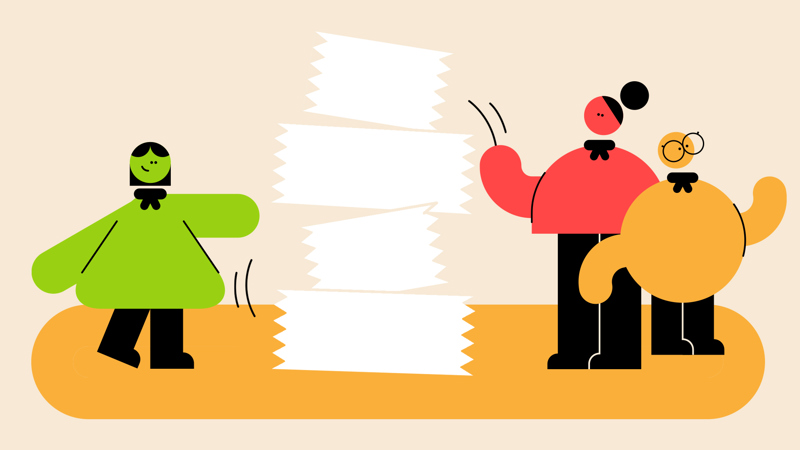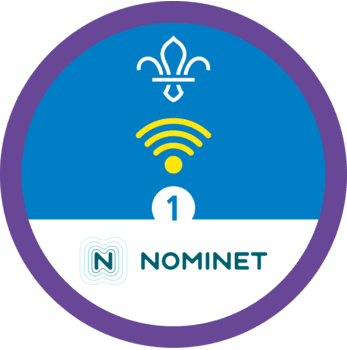
Strong password, weak password
You’ll need
- Sticky notes
- Pens or pencils
Before you begin
- Make sure there are enough small pieces of sticky notes (or scrap paper) for everyone to have at least five each.
Strong or weak?
- The person leading the activity should ask the group when they might need to create a password for an online activity. This might be when creating an email account, a gaming or social media account, or a subscription.
- Passwords should be really strong so no one can guess them. The person leading the activity should also everyone what might happen if someone guessed your password. They might pretend to be you and post something unpleasant, or they might try to find out personal information about you or your friends or family.
- The person leading the activity should explain that to create a strong password that’s easy to remember, people could try using three random words containing upper and lower case letters (capitals and small letters), numbers, and symbols (such as exclamation marks, question marks, pound signs, asterisks, or dollar signs).
- Everyone should get five sticky notes.
- Everyone should write a number on one sticky note, a symbol on one sticky note, and three random words on their other three sticky notes. These words could be something they can see, feel, or touch – or just a word they like the sound of.
- Everyone should put their four pieces of paper in a row on the floor or table to create a password.
- Now it’s time to mix it up! Everyone should switch around the pieces of password puzzle until they have one they’re happy with.
- Everyone should try to make their password stronger by adding capitals, replacing a letter with a symbol for added strength, or splitting up words or numbers.
- Everyone should spend a few moments memorising their password and saying it quietly to themselves. The person leading the activity should remind everyone not to use these passwords in real life if there’s any chance that anyone else has seen them – people could repeat this activity at home to create a secure password that no one else knows.
Reflection
This activity shows everyone an easy way to make a really strong password. Perhaps they won’t use this password exactly but now they know how to create a memorable password. As a group think about how to keep that password safe if they’re worried about forgetting it. They could tell a parent (but only one parent, not friends or anyone else) or write it down and keep it somewhere safe (not visible near the computer). They could also use an online password manager. Remind everyone that the internet is a brilliant place but just like in real life, it’s good to be safe and secure. Ask if anyone can think of real life examples where they take sensible precautions such as when crossing the road or wearing protective clothing for sport. Staying safe online is just the same. Ask the group to teach their families and friends how to make really strong passwords too so they share their new skills.
Safety
All activities must be safely managed. You must complete a thorough risk assessment and take appropriate steps to reduce risk. Use the safety checklist to help you plan and risk assess your activity. Always get approval for the activity, and have suitable supervision and an InTouch process.
- Online safety
Supervise young people when they’re online and give them advice about staying safe. Take a look at our online safety or bullying guidance. The NSPCC offers more advice and guidance, too. If you want to know more about specific social networks and games, Childnet has information and safety tips for apps. You can also report anything that’s worried you online to the Child Exploitation and Online Protection Command. As always, if you’ve got concerns about a young person’s welfare, including their online experiences, follow the Yellow Card to make a report.
This can also be done as a game where everyone writes down their initial items and places each in a bowl marked one, two three and four. Everyone else stands in two teams. When the person leading the game calls out ‘go’ the first person runs and takes one piece of paper from each bowl and then runs back to the team. While the second person runs to collect their paper the first person puts theirs together to create their strong password. The first team to have all players put together their strong passwords wins.
Pairs can work together to create their passwords (remind them that this is a fun activity and they probably won’t use these actual passwords so it’s OK to work together). Support anyone who needs help writing down their ideas.
All Scout activities should be inclusive and accessible.
Create a strong password set of guidelines as a group. Include suggestions like, ‘don’t use the same password twice’ or ‘make sure new passwords are very different to old ones’. Post these on the group's website or social media channels.
Learn about, and set up, Two-Factor Authentication (2FA) for your most important accounts; or explore password managers as a way of securely managing all your passwords and ensuring they are unique for each account.
